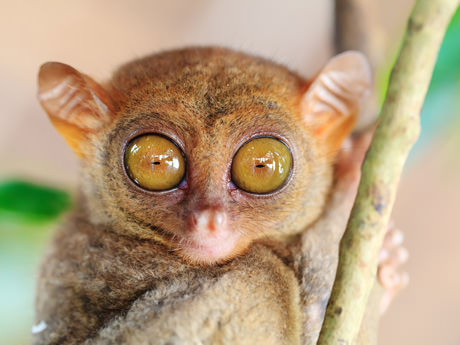Introduction
The Philippines is surging as a popular go-to destination for visitors to Asia, and much of the popularity is due to its remarkable biodiversity. With an astoundingly rich array of colorful wildlife in the oceans, lakes, forests and even the cities themselves, the country’s place in the world as both a kingdom of nature and a home to some of the strangest animals on Earth is well-documented.
Background
The Philippines’ biodiversity is largely due to its vast network of islands – about 7,100 in all – which rose out of the Pacific Basin’s “Ring of Fire”. Much of the country was once covered in lowland rainforests and, coupled with the many isolated islands and tropical location, this has resulted in a remarkable species diversity and high level of endemism – i.e. species unique to their specific location. The resulting localized evolution over millions of years means the country has a variety of species that rivals even the Galapagos Islands.
Five Fascinating Animals
Philippine Tarsier
Perhaps the most famous tiny monkey on the planet, the Tarsier’s diminutive, bug-eyed appearance is fascinating to see. Endemic to the country, it averages 85 to 160 mm (3.35” to 6.30”) in height – the size of a human fist. Its diet consists of insects, small crustaceans and sometimes small lizards and birds.
Nudibranch
Abundant in shallow waters, these mesmerizing, colorful mollusks – up to a foot in length – are part of the sea slug family and vary wildly in color and form. They are simultaneous hermaphrodites and some are even solar-powered, storing algae in their outer tissues and living off the sugars produced by the algae’s photosynthesis.
Philippine Eagle
Almost mythical in appearance, one of the world’s largest eagles is nearing extinction. With only 100-300 known to exist, this massive winged predator can grow to as tall as one meter (3.35 feet) in height and is the country’s national bird. It preys on bats, snakes, birds and even small deer. Killing one is punishable by 12 years in jail.
Palawan Bearded Pig
This unusual-looking pig – and yes, it is indeed a pig – can only be found in the archipelago including Balabac, Palawan and the Calamian Islands. Ranging from one to 1.6 meters (3.3 to 5.2 feet) in length and up to 150 kg (330 lb), it was elevated to a new species in 2001. Once abundant, its numbers were drastically reduced after farmers decimated the population to protect crops.
Swell Shark
Newly discovered in 2011 and dubbed “Bubble Shark” by locals, this meter-long (39-inch) shark can expand its body to double its size to ward off enemies. They hide in crevices in relatively shallow waters during the daytime and come out at night, either sucking in small fish or remaining motionless on the ocean floor with its mouth wide open as a trap for potential prey.
Five Facts About Philippine Fauna
- According to the Encyclopedia of Earth, there are five major and at least five minor centers of endemism in the Philippines, the largest being Luzon with at least 31 endemic species of mammals.
- The country has one of the highest rates of new species discovery in the world with 16 new species of mammals discovered in the last decade.
- The Philippines is one of 17 mega-biodiverse countries in the world and is home to what is considered the global center of marine biodiversity according to Globe International.
- The Philippines is considered one of the world’s most threatened ecological hotspots by the Critical Ecosystem Partnership Fund.
- There are 535 bird species here, with 35% endemic to their location,167 mammal species (61% endemic), 237 reptile species (67.5% endemic) and 89 amphibian species (85% endemic). With just 7% of the original rainforest left in the Philippines – resulting in a drastically reduced natural habitat – a significant number of these species are considered critically endangered and facing extinction.
Best Places to Explore
Palawan province is home to many of the country’s remarkable range of species. The Calauit Island Wildlife Sanctuary on Busuanga Island is highly rated and houses many fascinating species including the Palawan bearcat and bearded pig.
Home to tarsiers, flying lemurs, civet cats, monitor lizards, monkeys and many more fascinating animals, Rajah Sikatuna National Park on the island of Bohol is a veritable heaven for the nature lover and is a protected sanctuary.
The Philippine Tarsier can easily be seen up close at the Philippine Tarsier Conservatory in Tagbilaran City on the island of Bohol.
Numerous bat species – including the “flying fox”, named so for its resemblance to a fox with wings – can be seen on Boracay Island particularly in the Bat Caves.
There are numerous diving spots all over the country – especially around Bohol – where you can see the nudibranch and other crazy, colorful creatures of the sea.

